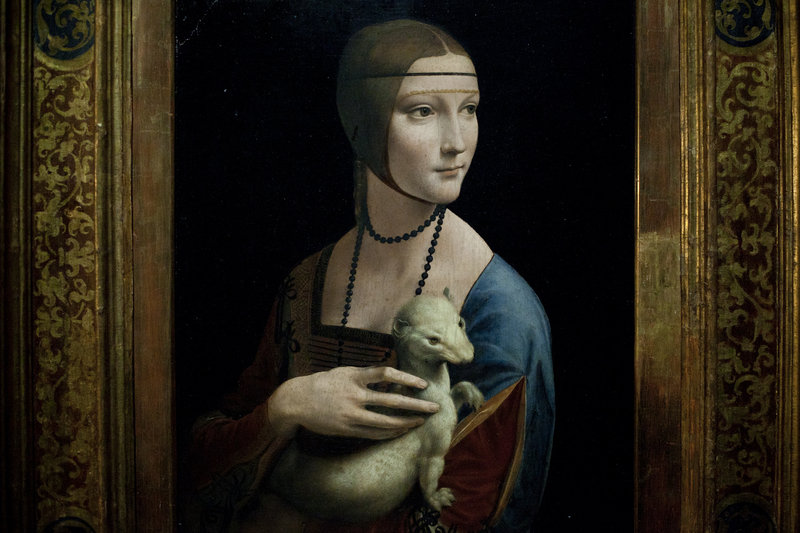BERLIN – A new exhibition in Berlin of early Italian Renaissance portraits brings together for the first time key works from museums around the world, including Leonardo da Vinci’s masterpiece “Lady with an Ermine.”
More than 150 pieces of art, including paintings, drawings, sculptures, medallions and busts, are on display at Berlin’s Bode Museum through Nov. 20. The show examines how portraits evolved — from early formulaic profiles to works in which the personalities of real people came through.
The show was curated in collaboration with the Metropolitan Museum of Art and will travel to New York after the Berlin exhibit, where it will be open from Dec. 19 to March 18.
Museums from around the world have lent top Renaissance works to Berlin, among them the Louvre in Paris, the Uffizi in Florence and London’s National Gallery with pieces by Botticelli, Donatello, Pisanello and Leonardo, among others.
“The fifteenth century is the first century in which large numbers of people had independent portraits of themselves made,” Keith Christiansen, the Senior Curator of European Painting at the Metropolitan Museum, told The Associated Press in an interview Wednesday.
“The artists who painted independent portraits for the first time confronted the issues of what a portrait is about: Is it about commemoration, is it about celebration of beauty, is it about social position, rulership, identity?”
Christiansen, who cooperated with Stefan Weppelmann from the National Museums’ Gemaeldegalerie of Berlin, said it will take visitors through the solutions that artists found to these problems.
Among the early portraits are three “Portraits of a Lady” by Antonio and Piero del Pollaiuolo from 1460-65, which depict the profiles of three young women with delicately painted, pale faces, carefully arranged hair, jewelry and elaborate dress — but all of them looking unemotionally into the distance.
“It starts with the face, those aspects of the face that are memorable,” Christiansen said. “It then moves down to the shoulders. At a certain point, artists began to realize that the inclusion of hands and gestures, the movement of an arm, the suggestion of the tilt of the head, that all of this communicates personality — all of this had to be discovered first.”
The exhibition focuses both on art produced for the Italian courts, as well as the development of portraiture in the following centuries.
Among the exhibition’s highlights is also Leonardo da Vinci’s 1489/90 portrait “Lady with an Ermine” from the Czartoryski Collection in Cracow, Poland. The delicate, white-skinned girl, draped in valuable fabrics, caresses a white-furred ermine she is holding, with a hint of a smile on her face.
Send questions/comments to the editors.



Success. Please wait for the page to reload. If the page does not reload within 5 seconds, please refresh the page.
Enter your email and password to access comments.
Hi, to comment on stories you must . This profile is in addition to your subscription and website login.
Already have a commenting profile? .
Invalid username/password.
Please check your email to confirm and complete your registration.
Only subscribers are eligible to post comments. Please subscribe or login first for digital access. Here’s why.
Use the form below to reset your password. When you've submitted your account email, we will send an email with a reset code.